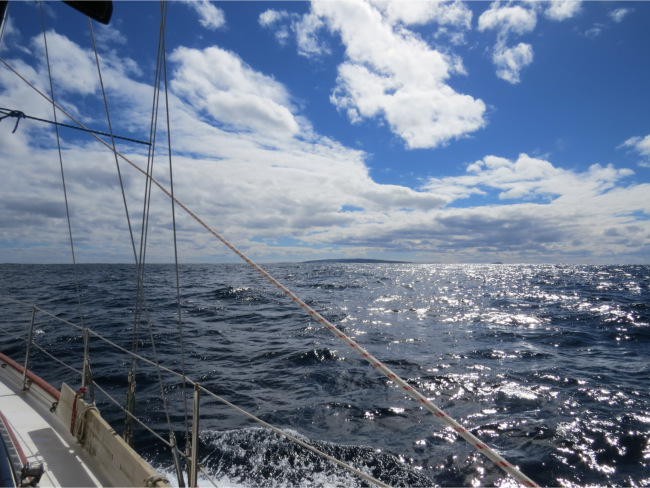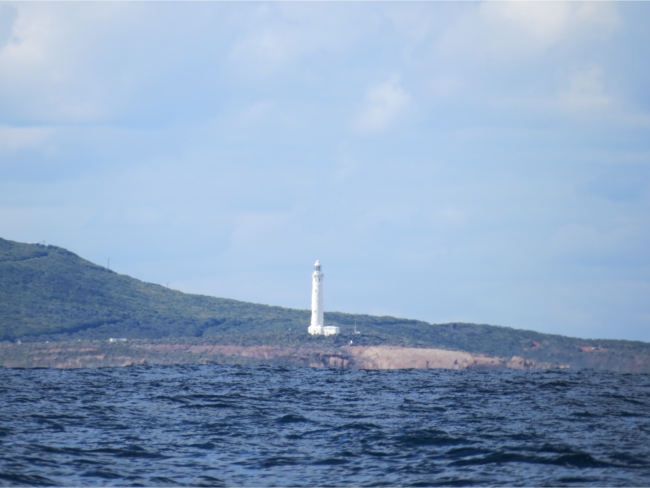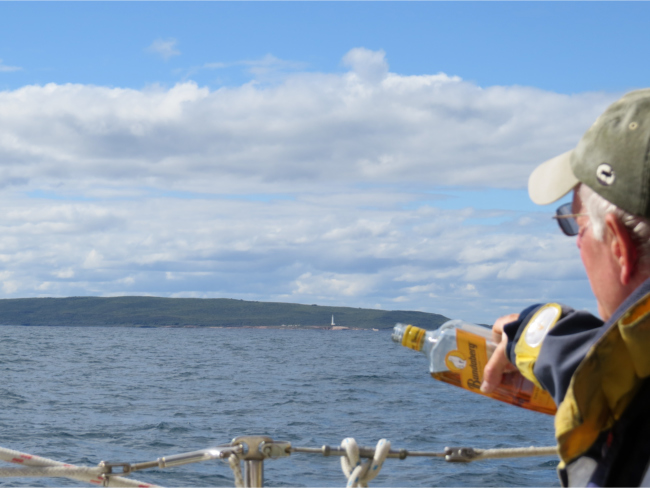Rounding Cape Leeuwin
/
Rounding a cape is always a big event for us. Sometimes it's a benign experience and sometimes we find ourselves wondering why it is that we choose to sail around major capes. There are five Great Southern Capes and Cape Leeuwin will be our fourth. (Marcie counts it as our last one – but even though we have sailed to within 30 miles of the fifth, the Cape of Good Hope in South Africa, and actually stood on it, I don't think we can count it until we actually do round it aboard Nine of Cups. On this, we agree to disagree – but I'm the one writing this blog, so for now we'll go by my count... David) In any event, adding Cape Leeuwin to our “rounded cape” list is one tick off the bucket list.
The sailors of old feared the great capes, and for good reason. Their latitudes and topography, sudden and dramatic weather changes, strong currents, off-lying hazards and potential rogue waves all contributed to give the great capes the reputation of being some of the most dangerous places in the world to sail.
Today, with modern navigational equipment, better charts and weather forecasting, and engines to get us out of ticklish situations, rounding the great capes is far less dangerous than it was for the old sailing ships. They had no choice but to take whatever weather presented itself, and it sometimes took weeks to make their way around. We can wait in a secure anchorage until we get a good weather window, then make a quick passage around the cape and find another anchorage before the next weather system arrives. That isn't to say we take any cape for granted or don't respect how quickly things can change. Very rarely does everything go as planned – when we rounded Cape Horn, for example, the 15 knots of wind that were forecast quickly deteriorated, and it was blowing 50 knots by the time we found shelter in Caleta Martial. We did have good charts, however, and so, unlike the old sailors, we were able to find shelter.
Cape Leeuwin is the most southwesterly point on the mainland of the Australian continent. It was named by Matthew Flinders in honor of the first known ship to have visited the area. The Leeuwin ("Lioness"), a Dutch vessel, had charted some of the nearby coastline in 1622. Cape Leeuwin has a large number of reefs, rocks and tiny islands, some extending more than 5 miles offshore, making it particularly hazardous. At least 23 ships have come to grief here.
To assist mariners in these treacherous waters, the Cape Leeuwin lighthouse was built. It was completed in 1896 and is the tallest lighthouse in Western Australia. The tower and cottages were constructed of local limestone and the lighthouse is quite stunning, even from our vantage point 4 miles offshore. It was one of the last lighthouses in the world to remain totally manually operated. Until 1982, the lighthouse keeper had to light the kerosene lamp and mind the clockwork mechanism each night. In 1982, it was converted to electricity and was fully automated in 1992.
If you are Australian, Cape Leeuwin is considered the point where the Indian Ocean and the Southern Ocean meet. (Most other nations consider the Southern Ocean to only exist south of 60ºS – and by this definition, Cape Leeuwin is where the Pacific and Indian Oceans meet). By either definition, however, we are now in the Indian Ocean – a new ocean for us!
The forecast winds never materialized. We had wind on the nose until we were almost to Cape Leeuwin, when it backed to the SW and began to die just as the sun came out. Thus, we rounded the fearsome Cape Leeuwin in near calm conditions on a pleasant sunny afternoon.
As we passed the cape and entered the Indian Ocean, we gave a tot of rum to Neptune, thanking him for looking after Nine of Cups and her crew on our many passages and asking for his continued protection in our future passages. We also saluted the many sailors who, due to misfortune, perished in these waters.
We turned the corner and started heading north late in the day. Since we couldn't make it to Quandalup in the daylight and conditions were so benign, we anchored in picturesque Hamelin Bay for the night.
That's our account of rounding Cape Leeuwin. Of the 4.5 Great Southern Capes we have now rounded, this was by far the most benign. It doesn't make for an exciting story, but we are certainly not complaining. (Well, okay, except for that little bit of whinging about not having the predicted winds).






